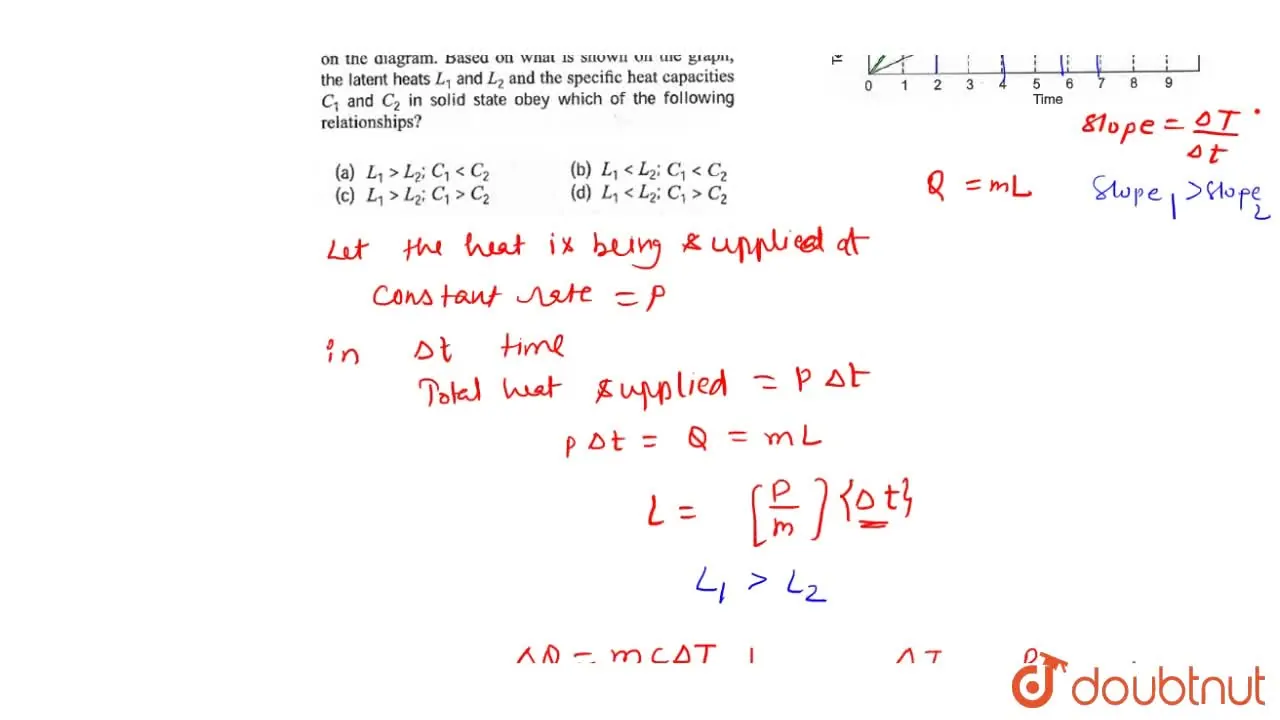Two solid bodies of equal mass m initially at T=0∘C are heated at a uniform and same rate under identical conditions. The temperature of the first object with latent heat L1 and specific heat capacity in solid state C1 changes according to graph 1 on the diagram. the temperature of the second object withe latent heat L2 and specific heat capacity in solid state C2 changes according to graph 2 on the diagram. based on what is shown on the graph, the latent heat L1andL2 and the specific heat capacities C1andC2 in solid state obey which of the following relationships?
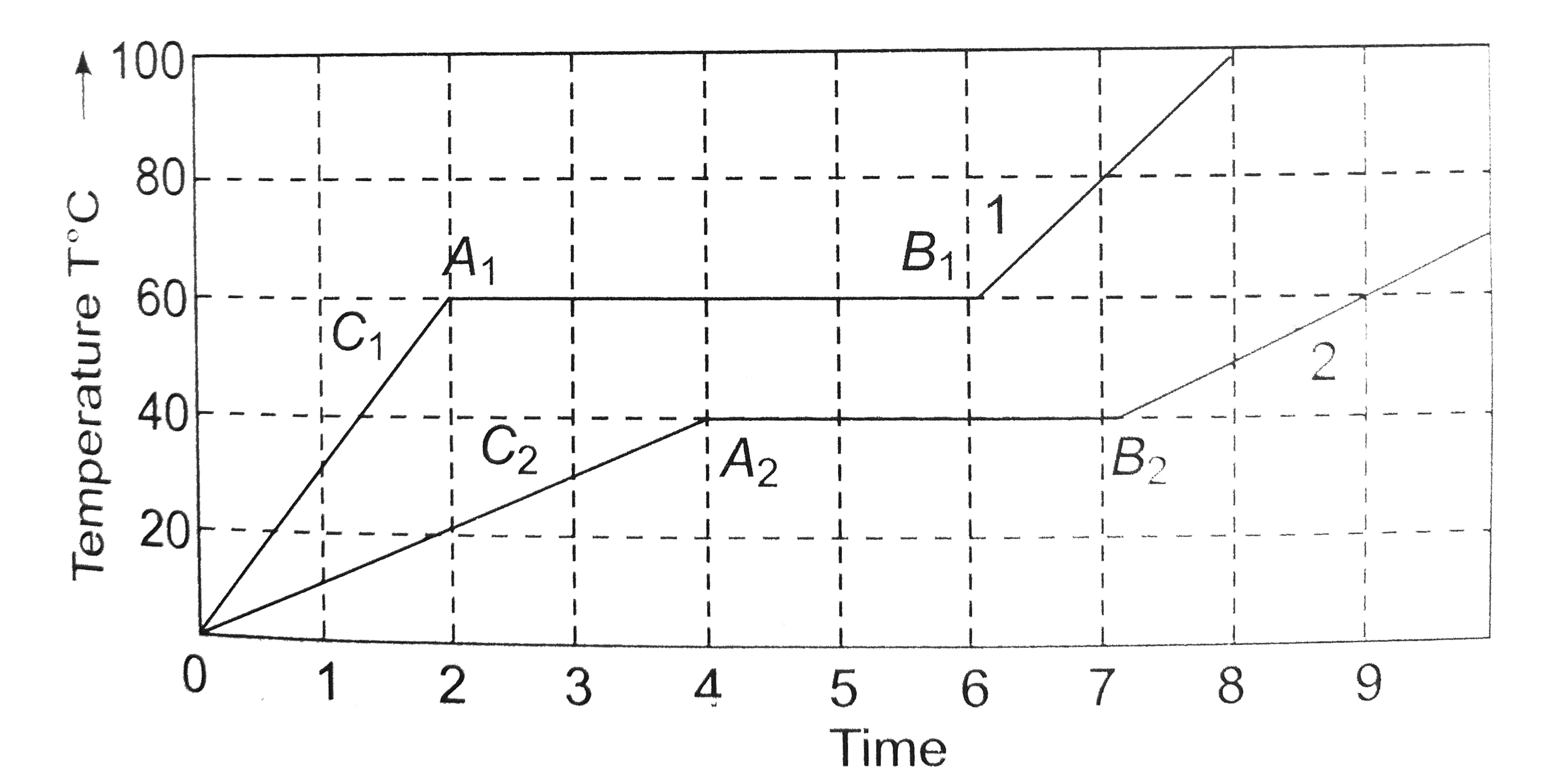
L1>L2,C1<C2
L1<L2,C1<C2
L1>L2,C1>C2
L1<L2,C1>C2
The correct Answer is:A
If heat is supplied at constant rate P, then Q=PΔτ and as during change of state Q=mL,so,mL=PΔt
i.e., L=[Pm]Δt=Pm (length of line AB)
Hence L1>L2
i.e., the ratio of latent heat of fusion of the two substances are in the ratio 3:4
In the portion OA the substance is in solid state and its temperature is changing.
ΔQ=mCΔT and ΔQ=PΔt
so, ΔtΔt=PmC or slope = PmS=[asΔTΔt=slope]
Hence, C1<C2.
Related Playlists
- BOOK - A2ZCHAPTER - THERMAL PROPERTIES OF MATTEREXERCISE - Transmission Of Heat : Conduction28videos
THERMAL PROPERTIES OF MATTER
- BOOK - A2ZCHAPTER - THERMAL PROPERTIES OF MATTEREXERCISE - Transmission Of Heat : Radiation28videos
THERMAL PROPERTIES OF MATTER
- BOOK - A2ZCHAPTER - THERMAL PROPERTIES OF MATTEREXERCISE - Chapter Test30videos
THERMAL PROPERTIES OF MATTER
- BOOK - A2ZCHAPTER - ROTATIONAL DYNAMICSEXERCISE - Chapter Test29videos
ROTATIONAL DYNAMICS
- BOOK - A2ZCHAPTER - UNIT, DIMENSION AND ERROR ANALYSISEXERCISE - Chapter Test28videos
UNIT, DIMENSION AND ERROR ANALYSIS
Similar Questions
Two bodies of equal masses are heated at a uniform rate under identical conditions. The change in temperature in the two cases is shown graphically. The ratio of their specific heats in the solid state is
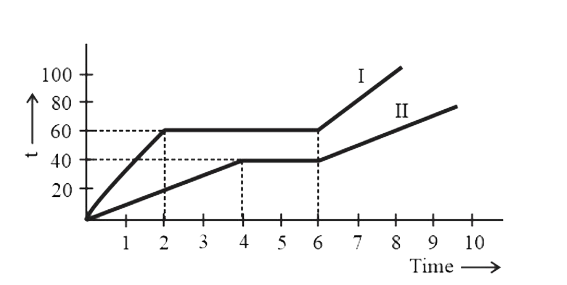 View Solution
View Solution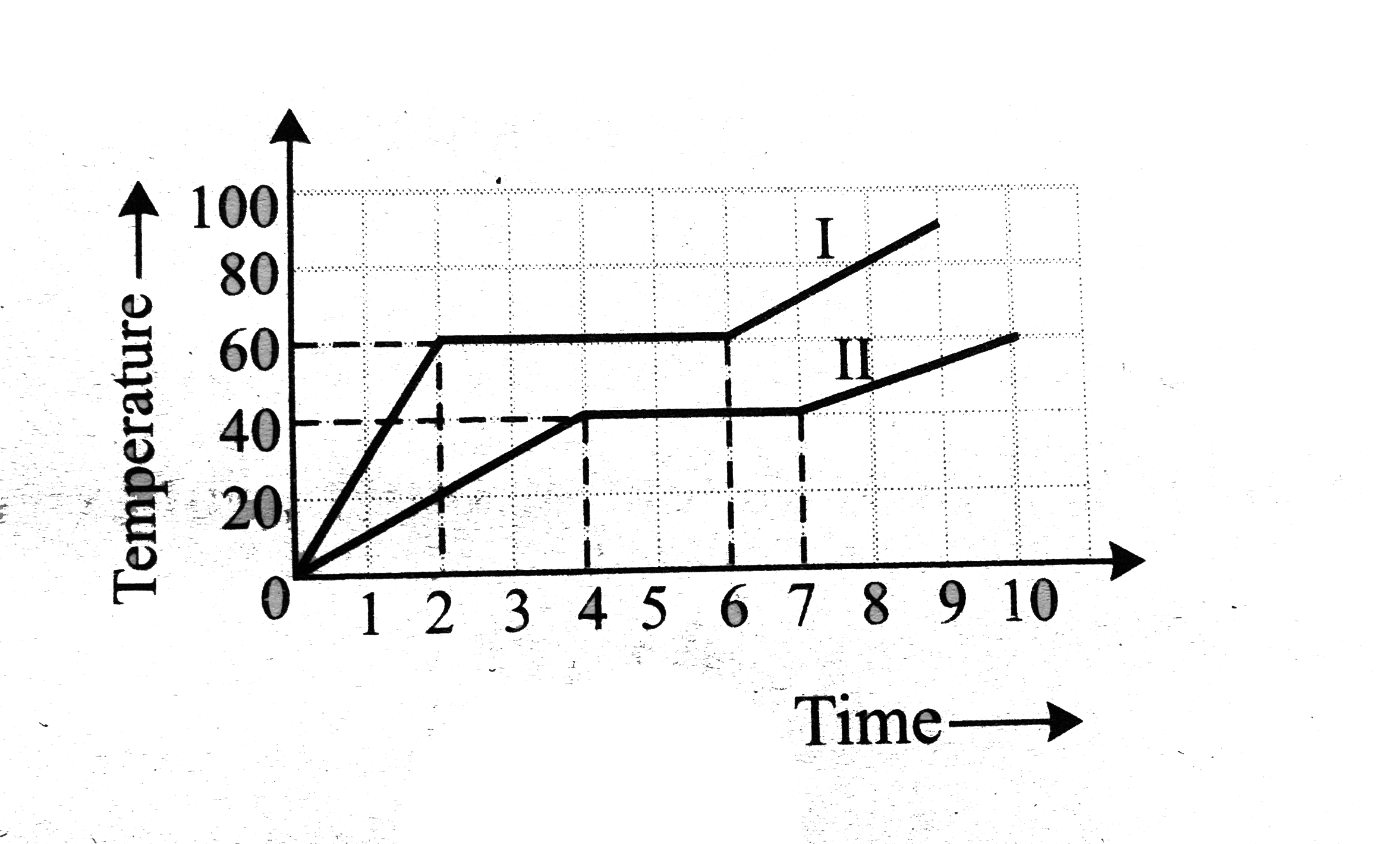
Two bodies of equal masses are heated at a uniform rate under identical conditions. The change in temperature in the two cases in shown graphically. What are their melting points?
Find the ratio of their specific heats and latent heats.View SolutionTwo different metal bodies A and B of equal mass are heated at a uniform rate under similar conditions. The variation of temperature of the bodies is graphically represented as shown in the figure. The ratio of specific heat capacities is :
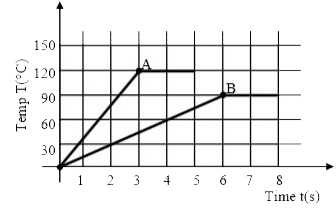 View Solution
View SolutionSpecific heat capacity of an object depends on
View SolutionSpecific latent heat of fusion and specific latent heat of vaporisation.
View SolutionWrite the symbol for specific heat capacity . State the units of specific heat capacity.
View Solution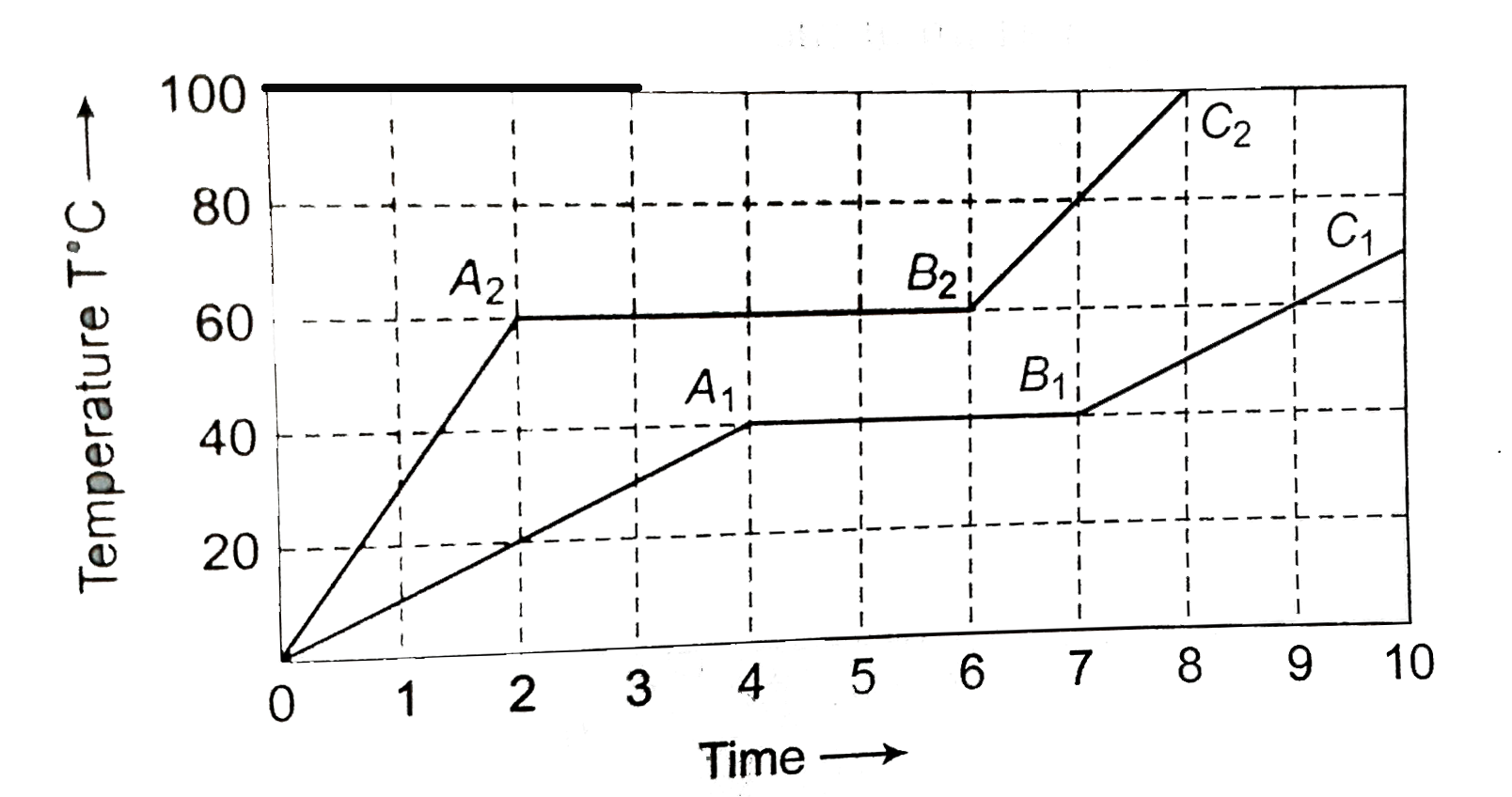
Two bodies of equal mass m are heated at a uniform rate under identical condition. Their change in temperature are shown. Then
(i) The ratio of melting point of the substances is 1.5
(ii) the ratio of their latent heats is 0.75
(iii) the ratio of specific heat of two substances is 0.33 in solid state
(iv) the ratio of specific heat of two substances is 2 in liquid state.View SolutionDefine specific latent heat of melting and specific latent heat of vaporization.
View SolutionVictoria falls is 68m high wht is the change in temperature of a drop if it falls that height if specific heat capacity is 1 cal/g deg C.
View SolutionTwo bodies of different materials but of equal mass are heated at uniform rate under identical conditions from 0∘C one body start melting at 60∘C after heating for 2 minutes while the other start melting at 40∘C after heating for 4 minutes. the ratio of their specific heats is
View Solution

